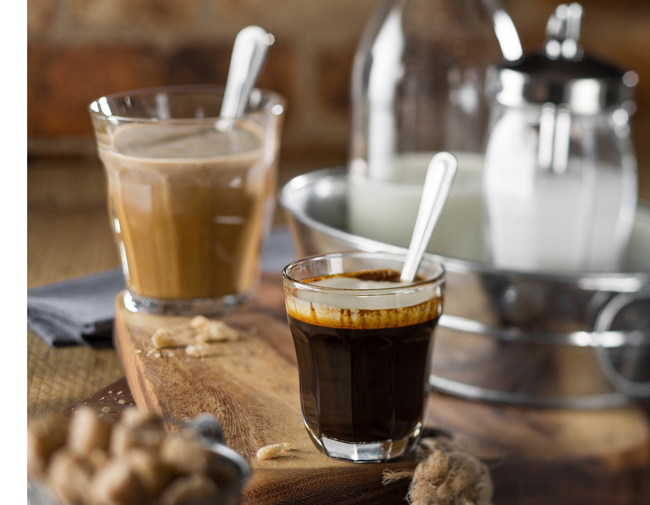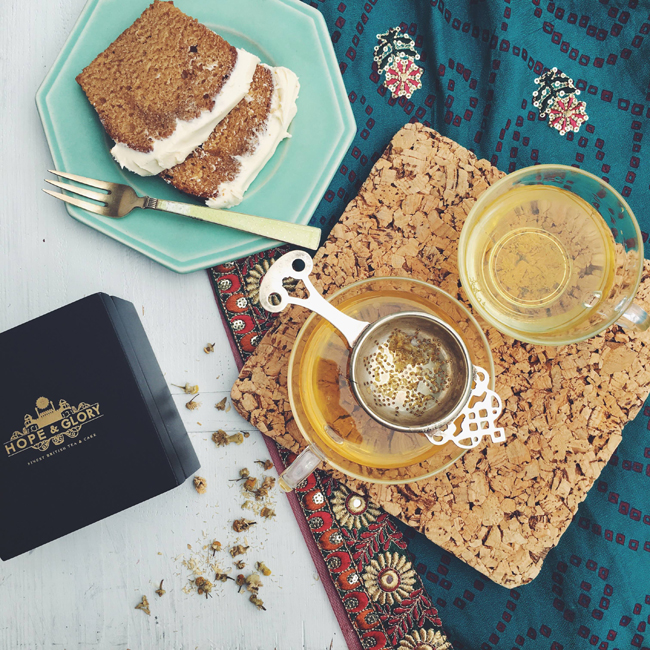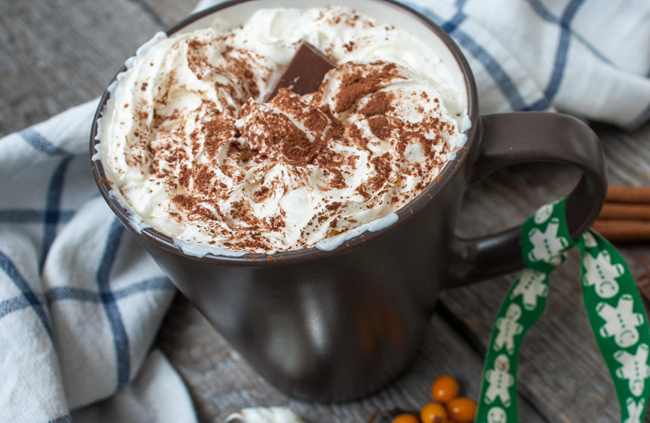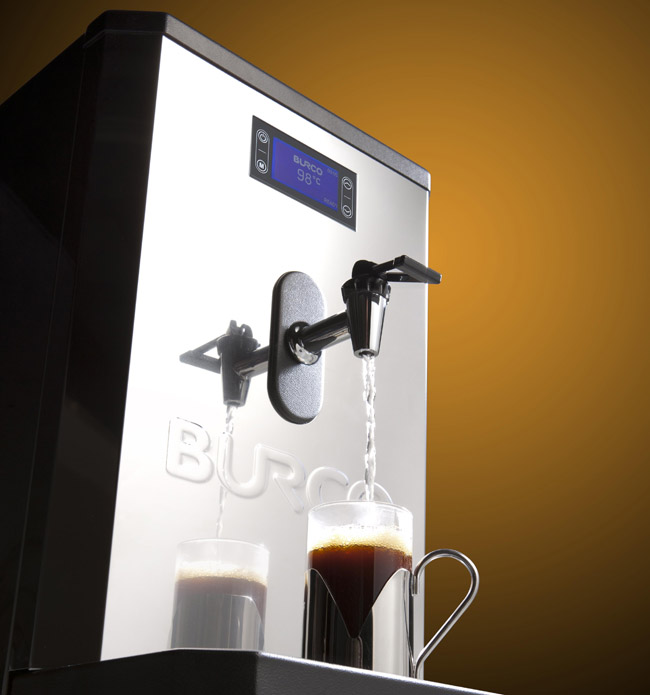Tradition or trend: the hot beverage market
The hot-drinks market could give a fashion house a run for its money, with current trends including nitro cold brew, floral latte, barrel-aged coffee and kombucha tea. But just as the latest clothing styles don't always go mainstream, so it is with coffee. Cold brew may have made it to Starbucks, but it accounts for only a small proportion of sales.
The latest figures from the Allegra World Coffee Portal CoffeeTrack show that the 2.5 hot drinks the average person buys out of home a week are made up of straightforward lattes, cappuccinos, Americanos and tea. So to what extent should caterers embrace innovation? Or is ‘keep it simple' the best maxim in times of economic downturn?
But the good news for operators, he adds, is that if customers develop a habit of popping in for coffee, food sales are likely to follow.
Among suppliers and operators, there is a recognition that the consumer is becoming more discerning and demanding, and unforgiving of poor-quality hot drinks. Indeed, a quarter of coffee drinkers now consider themselves a coffee connoisseur, Mintel's Coffee August 2017 report says, mostly those aged between 25 and 34, and especially men.
Guaranteed every time
For Barry Kither, sales and marketing director at Lavazza UK, technology is the key to a high-quality but cost-effective coffee offer. With the right kind of equipment, you can ensure your coffee ticks all the boxes for connoisseurs, while reducing overheads, he says. Choosing a capsule-based coffee machine guarantees consistency of taste. The capsule system means there is no grinder, no need for daily recalibration and, with no ground coffee, cleaning is simple and quick. And it means that it is possible to sell barista-quality coffee without employing barista-qualified members of staff. Tellingly, capsules are the fastest-growing part of Lavazza's business, he says.
The company also supplies Wetherspoon, which serves 50 million cups of Lavazza Rainforest Alliance-certified coffee to its customers every year. Wetherspoon has installed self-serve coffee machines in approximately 100 pubs across the UK and the Republic of Ireland, with all pubs set to offer this service by mid-November. And certainly, a branded self-serve coffee machine can make sense, delivering drinks to a set standard without staff involvement and so reducing overheads.
This is a growing sector of the market. There are also now more than 5,000 Costa Express machines around the UK, which are touchscreen machines that use fresh milk and freshly ground Mocha Italia beans. The machines report problems via 3G telemetry.
Kelley Walker, purchasing manager at procurement company Beacon, says it's important that operators consider the options when crafting their hot-drinks offering. Beacon's most popular styles of barista coffee are latte and cappuccino followed by flat white. Its research shows that 15% of consumers consider instant coffee their favourite hot beverage above the premium barista-style drinks.
Depending on what an individual business' customers demand, Walker suggests that costs can be kept down by the operator through the choice of beans: "In terms of the coffee beans that are used, we would advise looking at alternatives, as there are often ways in which costs can be brought down. Most coffee sold is 100% Arabica; however, switching from this to a blend of Arabica and Robusta, for example, still produces a quality product that generates better profit margins."
A new leaf
The latest Allegra World Coffee Portal data (Q2, 2017) suggests that tea is a significantly less popular drink than coffee out of home, accounting for about 11% of overall hot-beverage sales throughout the day. Mintel's Tea and Other Hot Drinks - UK report, published in July, says that standard black tea remains the nation's firm favourite, with 70% of Brits drinking it and 48% drinking it at least once a day. However, older consumers are the most frequent drinkers of standard black tea, while 25- to 34-year-olds are the most likely to drink speciality black tea, green tea or fruit or herbal tea.
Andrea Stopher, shopper marketing manager at Twinings, says that while traditional black tea is in decline, speciality teas, infusions and green teas are driving category growth, as consumers seek higher-quality teas, demand healthier products and seek new flavour experiences. Health and wellbeing is still a driving trend out of home, which is an opportunity for operators to drive sales of fruit and herbal infusions and green teas.
Millennials are continually on the lookout for fresh and novel experiences, and something to 'eat and tweet' about, Stopher says. So, drinks must taste great, be healthy and also be worthy of an Instagram post. Outlets can bring their tea service to life and draw in new tea-drinking crowds by serving their teas and infusions in stylish crockery, she recommends. For more of a contemporary feel that will appeal to younger consumers, try serving green teas and infusions in glassware with a slice of lemon or a sprig of mint.
Kathryn Oldershaw, marketing director for tableware supplier Utopia, suggests that presentation can make all the difference to the price of a hot beverage. "Beautifully served drinks will not only prove popular with snap-happy Instagram customers, but can also help to premiumise your offering, commanding a higher price tag in the process. If you are spending time and money on provenance and authenticity - as the artisan coffee movement demands you do - it stands to reason that the way you serve your drinks reflects this."
For Tetley, the consistency of the serve is vital with tea. Marshall Kingston, senior brand manager - out of home, says: "With tea, it is important that staff have the knowledge and confidence to offer advice on the variety of blends they offer."
Tetley has launched Tea Masters, a free online training platform for the out-of-home trade. It was developed to address barriers in tea purchase, such as poor knowledge and quality of serve. A key point covered on the course is that it's important to ask your customers "How do you like your tea?". Consider conducting a team tea-tasting session, highlighting the importance of the tea occasion, while encouraging staff engagement with customers, Kingston advises.
Nina Chudasama, founder of organic and Fairtrade tea company Hope & Glory, echoes this point, saying that the biggest movement in tea is in its quality. "We are seeing a shift away from 'mainstream' tea, made with poor-quality leaf grades to whole leaf or flower teas and infusions," she says.
Little luxuries
A similar solution is suggested for boosting hot-chocolate sales by supplier Ferrero UK & Ireland. Hot chocolate and malted drinks remain rare treats and at the bottom of the hot-drinks menu in terms of sales volumes. Some 53% of people drink hot chocolate, but most drink it once a week or less.
Fiona Morgan, head of foodservice at Ferrero UK & Ireland, says that offering an upmarket option is the way forward: "Our findings show that upgrading your powder to chocolate flakes can prove a real money maker - 84% of people would pay an additional 50p or more, and well over a third up to £2. When you also consider that more people would order a hot chocolate in the first place, the profit potential of swapping is substantial."
Suppliers agree that seasonal special hot drinks, such as festive spiced hot chocolate, are big business when it comes to profits and are now an expectation on drinks menus. Although Allegra World Coffee Portal's analysis shows that sales of standard drinks are not seasonal, with cappuccino, Americano and latte having almost the same percentage sales in November and June, seasonal drinks can command a price premium of up to 20% more, says Twinings' Stopher. Offering pumpkin-spiced lattes over the Christmas period, for example, or serving 'guest' coffees will keep customers coming back and offer opportunities for upselling with seasonal food accompaniments, says Simon Remmer, sales director at Rombouts.
A precise science
The quality and temperature of water added to coffee or tea is often overlooked by catering establishments, says Russell Owens, marketing director at Zip Water UK. "The sad thing is, you can buy the highest-quality beans or loose-leaf tea, but use water at the wrong temperature and you'll ruin it in an instant."
Black tea needs freshly boiled water at 95ºC, however, green, yellow and white teas should be made with lower temperature water - around 80ºC. With coffee, 100ºC water should never be used as it will burn it, while water at 91ºC or less will not extract properly.
He comments: "We're seeing a bit of a backlash against 'trendy' coffees and teas. Customers are reverting to a simpler view of these drinks, going back to basics and focusing on flavour. True coffee connoisseurs appreciate the importance of the taste and aroma of the bean and how to get the best out of it." The way forward for restaurants and hotels is to choose an instant boiling water tap that delivers filtered water at the correct temperature, he says.
Phil Smith, head of category and insight at UCC Coffee UK & Ireland, agrees that the details matter to consumers who have become more unforgiving about poorly executed drinks. He says: "The public has come to expect each coffee to taste as good as the last, but common errors like badly foamed milk make quality and consistency difficult. As consumer tastes grow, the pub, restaurant and hospitality market can rely on super-automatic machines to provide consistent, quality coffee easily and across the entire menu."
And as Ian Harbinson, head of marketing at Burco Commercial, concludes, these are important details. Being able to offer a consistent hot beverage menu may attract a different audience from that of the dining trade - and therefore an additional further revenue stream.
Extra revenue from drinks is always going to be welcome if customers cut back on their meals out and tighten the purse-strings, but even with the economy becoming more challenging, the indications are that hot drink sales continue to proliferate out of home. Whether the market will polarise more between high-end and standard options remains to be seen.
However, one thing is clear: it's not just the price, but anything from the origin of the coffee to the cup used to serve it, that is being scrutinised by consumers more closely than ever.
Suppliers
- Beacon www.beaconpurchasing.co.uk
- Burco Commercial www.burco-commercial.com
- Ferrero Foodservice www.ferrerofoodservice.com
- Lavazza www.lavazza.co.uk/uk/away-from-home
- Tetley www.tetleyteaacademy.co.uk
- Twinings www.twinings.co.uk/foodservice
- UCC Coffee UK & Ireland www.ucc-coffee.co.uk
- Utopia www.utopia-tableware.com
- Zip Water UK www.zipwater.co.uk









